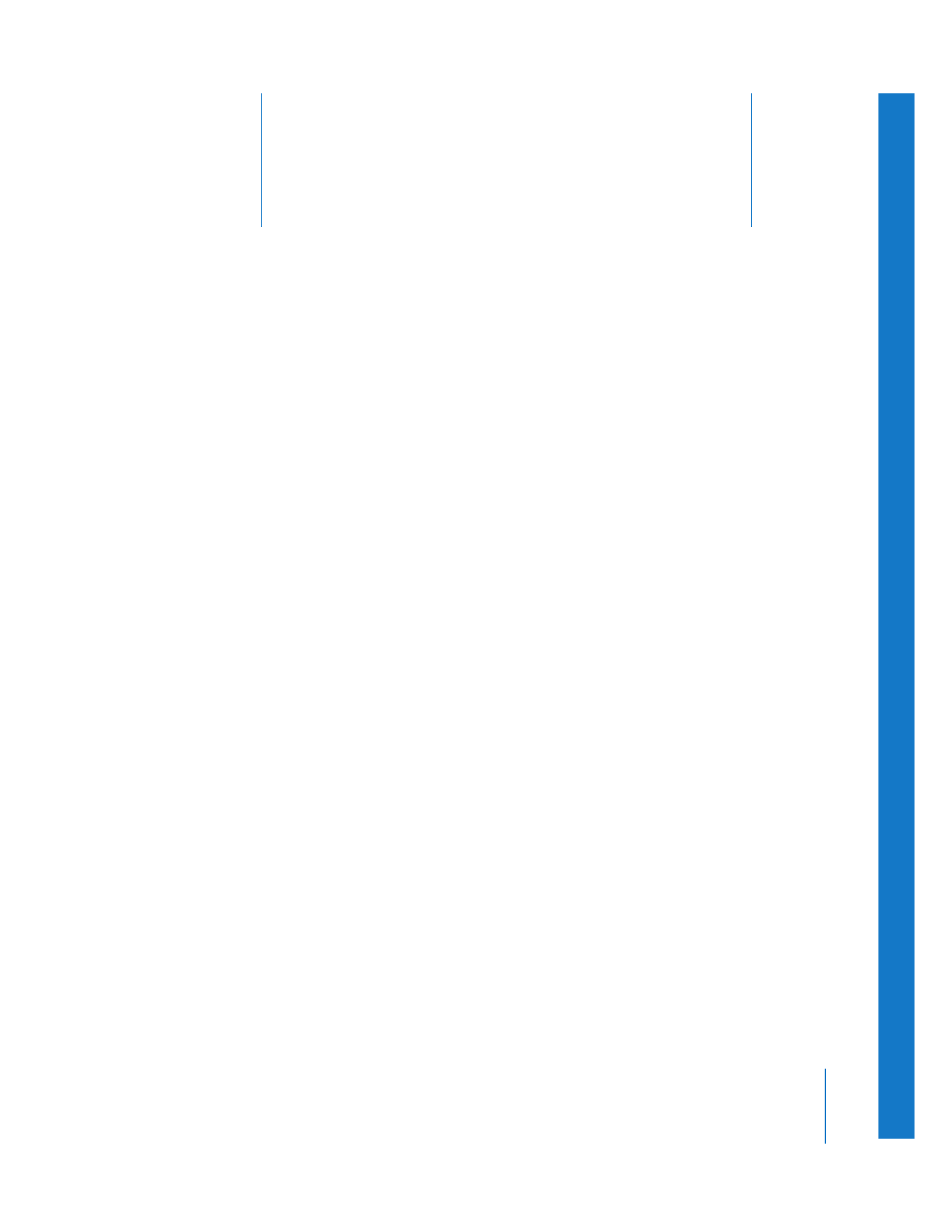
How You Use the Canvas
(p. 89)
Â
Opening, Selecting, and Closing Sequences in the Canvas
(p. 90)
Â
Learning About the Canvas
(p. 91)
Â
Editing Controls in the Canvas
(p. 92)
Â
Transport Controls
(p. 94)
Â
Playhead Controls
(p. 95)
Â
Marking Controls
(p. 97)
Â
Zoom and View Pop-Up Menus
(p. 98)
Â
Playhead Sync Pop-Up Menu
(p. 98)
How You Use the Canvas
In Final Cut Pro, the Canvas is the equivalent of a record monitor in a tape-to-tape
editing suite; it displays the video and audio of your edited sequence during playback.
When you open a new sequence, it appears simultaneously in tabs in both the Canvas
and the Timeline. The Canvas playhead mirrors the position of the Timeline playhead,
and the Canvas displays the frame at the playhead’s current position in an open
sequence. If you move the Timeline’s playhead, the frame displayed in the Canvas
changes accordingly. If you make a change in the Canvas, it’s reflected in the Timeline.
The controls in the Canvas are similar to those in the Viewer, but instead of navigating
and playing back individual clips, the controls in the Canvas navigate the entire
sequence currently open in the Timeline.

90
Part II
Learning About the Final Cut Pro Interface
Before you can work in the Canvas, it must be the currently selected, or active, window.
Otherwise, any commands or keyboard shortcuts you use may perform the wrong
operations. To display the Canvas, you must open a sequence from the Browser (see the
next section, “